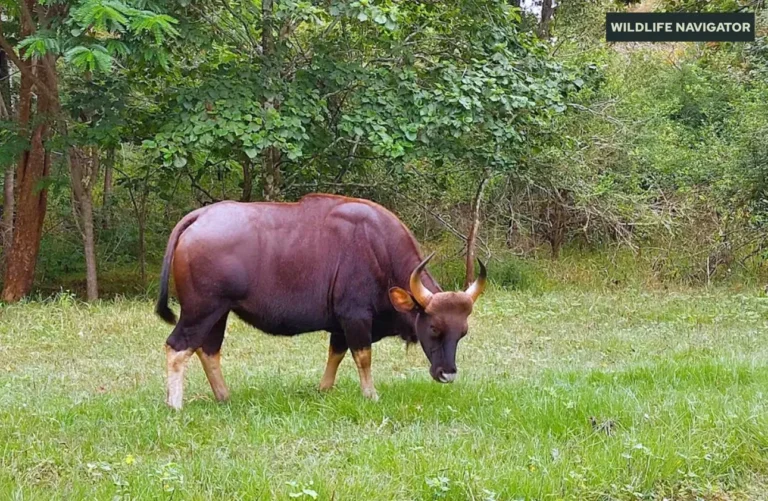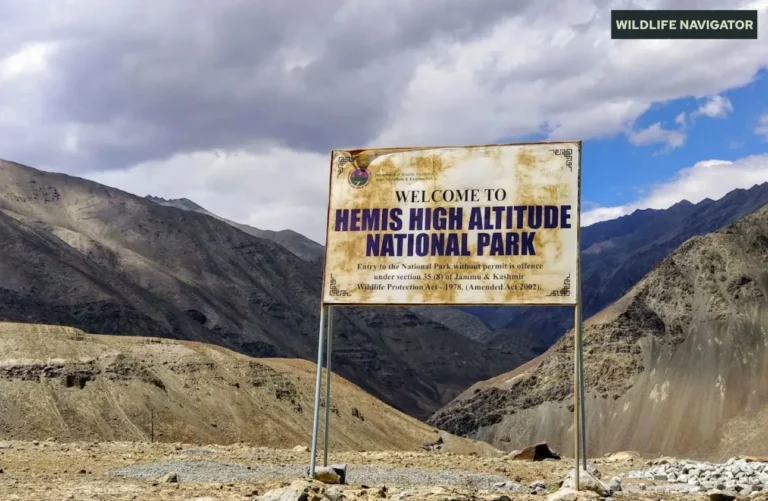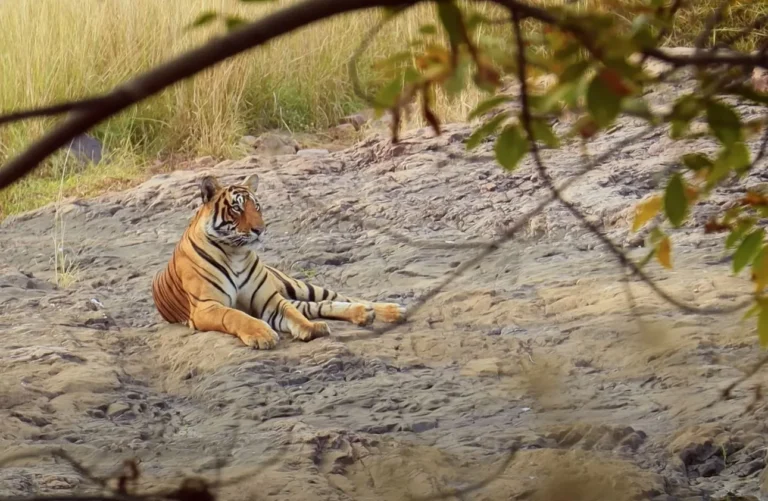Pin Valley National Park – Travel Guide: Wildlife, Treks, Villages & How to Reach

Pin Valley National Park lies in the remote, high–altitude desert region of Spiti in Himachal Pradesh. Known for its stark landscapes, snow–capped mountains, and pristine wilderness, it represents one of India’s most dramatic and untouched Himalayan habitats. As part of the celebrated network of national parks in India, it was established to protect rare and endangered species, particularly the elusive snow leopard and Himalayan ibex, showcasing nature at its rawest, shaped by extreme cold, strong winds, and thin air.
The valley gets its name from the Pin River, which runs through its heart and sustains life in this otherwise harsh environment. Unlike lush national parks, Pin Valley offers a unique blend of rugged beauty and spiritual serenity. Its landscape is dotted with ancient monasteries, tiny mud villages, and Buddhist prayer flags fluttering against barren mountains, creating a rare combination of wilderness and culture.
For adventure lovers, wildlife enthusiasts, and travellers seeking an offbeat Himalayan experience, Pin Valley National Park promises solitude, dramatic scenery, and a glimpse into the resilient life of high–altitude Himalayan communities.
Location and Geography
Pin Valley National Park is located in the southeastern part of the Spiti region in Himachal Pradesh, within the cold desert zone of the Trans–Himalayas. It stretches along the Pin River, a tributary of the mighty Spiti River, carving deep gorges and dramatic valleys through barren mountain slopes. The park lies at an elevation ranging roughly from 3,500 meters to over 6,000 meters above sea level, making it one of India’s highest protected wilderness areas.
Geographically, Pin Valley sits between the greater Himalayan range and the Zanskar range, resulting in extreme temperature variations and very low precipitation. Winters are long and severe, often dropping below –25°C, while summers are short but pleasant. Due to the lack of dense vegetation, the landscape appears stark yet mesmerising—featuring rugged cliffs, sharp ridgelines, scattered high–altitude meadows, and glacially carved valleys.
The terrain is challenging, with narrow dirt roads, steep slopes, and remote settlements, adding to its untouched charm. Surrounded by snow–laden peaks, including prominent mountains like Kullu–Spiti and Parvati ranges, Pin Valley forms a distinctive ecosystem that differs sharply from the lush lower Himalayan zones. This high–altitude desert environment, shaped by geological uplift and glacial influence, creates a unique habitat ideal for cold–adapted flora and fauna, especially the snow leopard and ibex.
History and Establishment
Pin Valley National Park was officially declared a national park in 1987 with the primary objective of protecting the fragile trans-Himalayan ecosystem and its rare high-altitude species. Before its notification, the region was already recognised by naturalists and conservation biologists for harbouring the snow leopard and Himalayan ibex—two iconic species of the cold desert biome.
The park became an important part of India’s conservation landscape as awareness grew about the ecological significance of Spiti and the surrounding Himalayan ranges. Traditional pastoral communities have coexisted with wildlife here for centuries, following sustainable grazing practices and Buddhist values that emphasise respect for all living beings. This harmony between wildlife and local culture played a key role in preserving the region long before formal conservation laws existed.
Post-establishment, Pin Valley became a focus area for snow leopard research and protection programs, supported by wildlife authorities and conservation organisations. The park continues to represent one of India’s most pristine wilderness zones, where conservation efforts balance biodiversity protection with the cultural and traditional lifestyle of local communities living in one of the world’s toughest climates.
Biodiversity
Pin Valley National Park shelters one of the most unique high-altitude ecosystems in India, shaped by extreme temperatures, thin air, and sparse vegetation. Despite its harsh environment, the region supports remarkable biodiversity, specially adapted to cold desert conditions.
Flora of Pin Valley National Park
Vegetation in Pin Valley is limited but highly specialised. You will mostly find hardy alpine and sub-alpine plant species that can thrive in rocky soils and low moisture.
Key vegetation types include:
- Dwarf juniper bushes
- Himalayan wildflowers and grasses
- Alpine shrubs
- Medicinal herbs used in traditional Tibetan healing, including artemisia and ephedra
During the brief summer, the valley blooms with colourful tiny flowers carpeting meadows, offering rare bursts of colour amid the stark landscapes.
Fauna of Pin Valley National Park
Pin Valley is a stronghold of some of the world’s rarest and most elusive high-altitude wildlife.
Mammals
- Snow Leopard – apex predator and flagship species
- Himalayan Ibex – common prey of snow leopards
- Blue Sheep (Bharal)
- Tibetan Wolf
- Red Fox
- Himalayan Marmot
- Pikas and mountain rodents
These animals are adapted to survive severe winters, limited vegetation, and rugged terrain.
Birdlife
Despite the sparse environment, Pin Valley attracts several Himalayan and migratory birds.
Notable species:
- Himalayan Snowcock
- Chukar Partridge
- Golden Eagle
- Bearded Vulture (Lammergeier)
- Griffon Vulture
- Snow Pigeon
With soaring cliffs and valleys, the region is a paradise for raptors, especially vultures and eagles.
Pin Valley’s ecological significance lies not just in its rare species, but in how life thrives under some of the harshest natural conditions on Earth—making it a sanctuary for wildlife lovers and conservationists alike.
Culture and Local Communities
Pin Valley is not only a protected wilderness but also a living cultural landscape shaped by ancient Himalayan traditions. The communities here follow Tibetan Buddhism, and their lifestyle mirrors the spiritual, artistic, and ecological ethics of the Buddhist philosophy.
Buddhist Heritage
The region is dotted with sacred monasteries, stupas, prayer flags, and chortens.
The most notable is Kungri Monastery, believed to be the second-oldest monastery in Spiti. Its tantric rituals, ancient murals, and traditional Cham mask dances reflect the valley’s rich spiritual heritage.
Traditional Way of Life
Villages in Pin Valley, such as Mud, Sagnam, and Gulling, consist of mud-brick homes designed to withstand extreme winters. Agriculture is limited due to short seasons, so locals cultivate hardy crops like barley, buckwheat, and green peas. Yak and sheep herding plays a vital role in livelihood, providing wool, meat, and dairy.
Community Values and Harmony with Nature
Life here revolves around simplicity, faith, and coexistence with nature. Buddhist teachings encourage compassion toward all living beings, and historically, this has helped wildlife survive without conflict. Traditional festivals, folk songs, and prayer ceremonies mark seasonal transitions and community milestones.
Visitors experience genuine Himalayan hospitality in homestays, where meals are cooked using local produce and families share stories of their ancestors, harsh winters, and deep connection with the mountains.
Pin Valley’s human presence does not disturb its wilderness; instead, it adds soul and character, offering travellers a rare blend of cultural and natural richness in one of the world’s most isolated mountain valleys.
Weather and Best Time to Visit
Pin Valley experiences an extreme high-altitude climate dominated by long, severe winters and short, mild summers. The region’s weather plays a major role in its accessibility and the type of experiences visitors can expect.
Climate Overview
- Winter (October to April):
Temperatures often drop below –25°C. Heavy snowfall blocks roads, isolating the valley for months. The landscape turns into a frozen desert, and travel becomes nearly impossible. Only local residents remain, relying on stocked food supplies and traditional heating methods. - Summer (May to September):
The snow begins to melt, roads reopen, and the valley becomes accessible. Temperatures stay cool, ranging roughly from 5°C to 20°C. This is the time when the valley comes to life—flowers bloom, wildlife becomes more active, and trekking trails open.
Best Time to Visit
- May to October is the ideal window for travellers.
Roads from boththe Shimla and Manali sides are usually operational, villages reopen for tourism, and homestays are functional. Clear skies make this period perfect for sightseeing, trekking, photography, and wildlife spotting.
Seasonal Highlights
- May–June: Snow patches still visible, pleasant days, cold nights.
- July–August: Greenest period, though occasional road closures due to rain in the lower regions.
- September–October: Crisp skies, golden landscapes, best for photography and fewer tourists before winter sets in.
Visitors must prepare for rapidly changing weather, strong winds, and cold evenings, even during summer. Proper clothing and gear are essential, as temperatures drop sharply after sunset.
How to Reach Pin Valley National Park
Pin Valley National Park lies in a remote corner of Himachal Pradesh, and reaching it requires planning, patience, and a love for mountain roads. Connectivity is limited, with no airports or railways nearby. The journey involves long drives through high mountain passes and rugged terrain, but the dramatic scenery makes every mile worth it.
Nearest Access Point
- Kaza, the main town in Spiti Valley, serves as the gateway to Pin Valley.
- From Kaza, the entry road leads to villages like Sagnam and Mud, the last settlement before the park’s core.
Routes to Reach Kaza
1. Manali Route (Faster, Seasonal)
- Route: Manali → Rohtang Pass → Gramphu → Kunzum Pass → Kaza
- Best Time: June to early October (depending on snow clearance)
- Highlights: Kunzum Pass views, glacial streams, raw Himalayan landscape
- Note: Rough roads, river crossings, and high-altitude passes require caution
2. Shimla Route (Longer, More Reliable)
- Route: Shimla → Narkanda → Rampur → Reckong Peo → Pooh → Tabo → Kaza
- Best Time: May to December (with occasional winter closures)
- Highlights: Gradual ascent, apple orchards, Sutlej River valley
- Note: Narrow stretches and rockfall zones around Kinnaur
Nearest Transport Hubs
- Airport: Bhuntar (Kullu), approx. 250+ km from Kaza (road only)
- Railway Station: Shimla (narrow gauge) / Chandigarh (broad gauge)
- From both points, road travel is required to reach Spiti
Local Transport
- Buses run by HRTC operate seasonally between Kaza and nearby towns
- Shared jeeps and taxis available, though limited in frequency
- Self-drive and motorcycles are popular among adventure travellers
Major Attractions
Pin Valley offers a blend of wild landscapes, ancient monasteries, traditional villages, and dramatic high–altitude beauty. The attractions here are raw, natural, and deeply cultural—perfect for slow, immersive exploration.
Pin River & Valley Landscapes
The Pin River flows through the heart of the valley, carving canyons and wide plains surrounded by barren mountains. Its turquoise waters contrast strikingly with the dusty brown desert terrain, making it a highlight for photographers and nature lovers.
Mud Village (Last Village of Pin Valley)
Mud (or Mudh) is the final settlement accessible by road and serves as the base for many treks.
Features:
- Scenic village with traditional mud–brick houses
- Homestays offering authentic Spitian hospitality
- Stunning views of snow–covered peaks and meadows
Sagnam Village
One of the largest villages in the valley, known for its warm–hearted locals, traditional lifestyle, and fertile fields surrounded by towering cliffs.
Kungri Monastery
The spiritual heart of Pin Valley.
- Second-oldest monastery in Spiti (over 600 years old)
- Home to ancient Tibetan manuscripts and sacred relics
- Hosts traditional Cham (masked) dance festivals
- Centre of the Nyingmapa Buddhist tradition
Pin Parvati Pass Trail (Advanced Trek)
One of the most challenging Himalayan treks, connecting Pin Valley to Parvati Valley in Kullu.
Known for:
- Diverse terrain: glaciers, alpine meadows, rocky moraines
- High–adventure crossing for experienced trekkers only
- Begins/ends at Mud village
Wildlife & Natural Scenery
While elusive, spotting Himalayan ibex or marmots along slopes adds a sense of wilderness. The valley’s stark beauty—towering ridges, river bends, fluttering prayer flags, and open skies—makes the journey feel meditative.
Nearby Attractions
- Dhankar Monastery & Lake (on the way to Kaza)
- Tabo Monastery, a UNESCO–recognised heritage site
- Key Monastery (beyond Kaza, but part of the Spiti circuit)
Pin Valley’s charm lies in its silence, dramatic landscapes, and ancient Himalayan culture—ideal for travellers seeking solitude and authenticity rather than crowded tourist spots.
Trekking & Activities
Pin Valley is a paradise for high–altitude trekkers and wildlife enthusiasts. The rugged terrain, remote trails, and dramatic mountain scenery make it one of the most rewarding adventure destinations in the Indian Himalayas.
Trekking
The valley serves as a gateway to some of the region’s most iconic treks.
Key routes include:
- Pin–Parvati Pass Trek
A legendary expedition linking Spiti to Parvati Valley in Kullu.
Known for glaciers, massive river crossings, and high–altitude passes.
Recommended only for experienced trekkers. - Mud to Bhabha Pass Trek
A scenic and comparatively easier trail connecting Mud village to Kinnaur.
Highlights include lush meadows on the Kinnaur side and rugged desert terrain in Spiti. - Local Valley Walks & Day Hikes
Short trails around Mud and Sagnam allow exploration of farming fields, cliffs, and riverbanks with great views.
Wildlife Spotting
Even though wildlife here is elusive due to the harsh environment:
- Himalayan ibex are often sighted on steep rocky cliffs
- Marmots can be spotted sunbathing in summer
- Birdwatchers may see eagles, vultures, and snow pigeons
Snow leopards exist here but require great luck and winter expeditions to see.
Photography
The valley is ideal for capturing:
- Stark mountain landscapes
- Milky Way and night sky (with minimal light pollution)
- Monasteries and prayer flags against barren peaks
- Traditional village life
Cultural Exploration
Visitors can interact with locals, participate in monastery rituals, and taste traditional Spitian food—like thukpa, butter tea, and barley–based dishes.
Adventure Tips
- High altitude demands acclimatization
- Trekking permits or local guides may be required
- Weather changes rapidly—carry proper gear
Pin Valley rewards those who travel slow, respect nature, and embrace adventure in its rawest form.
Accommodation Options
Pin Valley offers simple, locally managed accommodation that reflects the traditional lifestyle and hospitality of Spiti’s mountain communities. Comfort levels are basic, but the experience is authentic and deeply cultural.
Homestays in Pin Valley Villages
Villages like Mud, Sagnam, and Gulling host several family–run homestays.
Features:
- Cozy rooms with simple bedding
- Traditional mud–brick homes with wood heating
- Local meals made from barley, potatoes, peas, and dairy
- First–hand cultural interaction with residents
Staying in a homestay provides a genuine glimpse into daily life—hearth kitchens, prayer rooms, and warm hospitality.
Guesthouses in Kaza
Since Pin Valley itself has limited infrastructure, many travelers base themselves in Kaza (approximately 1–2 hours away) and make day trips or overnight stays.
Options include:
- Budget guesthouses
- Small boutique stay options
- Cafés and convenience shops nearby
Camping & Trekking Stays
Adventure travelers on multi–day treks often use camping setups with guide support.
Important notes:
- Independent camping inside the park is discouraged to protect fragile habitats
- Always follow Leave–No–Trace principles
Facilities & Services
Due to remoteness, amenities are minimal:
- Electricity may be limited or solar–based
- Hot water availability varies
- Wi–Fi and phone signal are weak or unavailable
- Cash is preferred over digital payments
Travel Tip
Book stays in advance during peak months (June–September). Late season travelers should check road and weather updates before arrival.
Pin Valley stays are not about luxury—they are about immersion. Expect simplicity, warmth, and a tranquil mountain lifestyle.
Travel Tips and Conservation Challenges
Traveling to Pin Valley requires preparation and a responsible mindset. The region’s remoteness, fragile environment, and extreme climate demand careful planning and respectful behavior from every visitor.
Travel Tips
- Acclimatization: Spend at least a day in Kaza or similar altitude before entering Pin Valley to avoid altitude sickness.
- Carry Essentials: Fuel, snacks, warm clothing, medicines, cash, and a power bank. Facilities are limited.
- Weather Awareness: Sudden snowfall or landslides can block routes. Always check local road updates.
- Slow Travel: Harsh terrain and narrow roads require cautious driving and patience.
- Respect Local Culture: Dress modestly, ask before photographing locals, and maintain silence in monasteries.
- Sustainable Tourism: Carry a reusable bottle, avoid packaged foods, minimize plastic waste.
- Emergency Preparedness: Phone network is unreliable; inform someone about your travel plans.
Conservation Challenges
Pin Valley’s ecosystem is extremely delicate. Harsh climate, limited vegetation, and slow natural recovery make it vulnerable to disturbance.
Key challenges include:
- Wildlife protection: Snow leopards and ibex need undisturbed rocky habitats. Noise and intrusion threaten them.
- Habitat fragility: Alpine vegetation takes years to grow; trampling harms plants and soil.
- Tourism pressure: Waste, irresponsible trekking, and off-trail travel damage the ecosystem.
- Climate change: Faster glacial melt and unpredictable weather threaten wildlife and local livelihoods.
Responsible Visitor Practices
- Stay on designated trails
- Avoid loud noises and wildlife disturbance
- Do not litter or leave food scraps
- Support local homestays and guides
- Avoid collecting plants or stones
- Carry waste back to towns for disposal
Pin Valley’s wild beauty survives because it remains untouched and respected. Visitors play a crucial role in preserving this high-altitude sanctuary for future generations of wildlife, locals, and explorers.
Conclusion
Pin Valley National Park stands as one of India’s most remote and pristine wilderness destinations, where nature, culture, and spirituality merge seamlessly in the heart of the Trans–Himalayas. Its dramatic landscapes, snow–capped peaks, ancient monasteries, and rare wildlife—especially the elusive snow leopard—make it a truly extraordinary place for explorers seeking raw, untouched beauty.
Traveling here is not about luxury or convenience; it is about immersion, patience, and respect. The valley demands preparedness, humility, and a responsible approach, rewarding those who come with an open mind and deep appreciation for nature and local culture.





